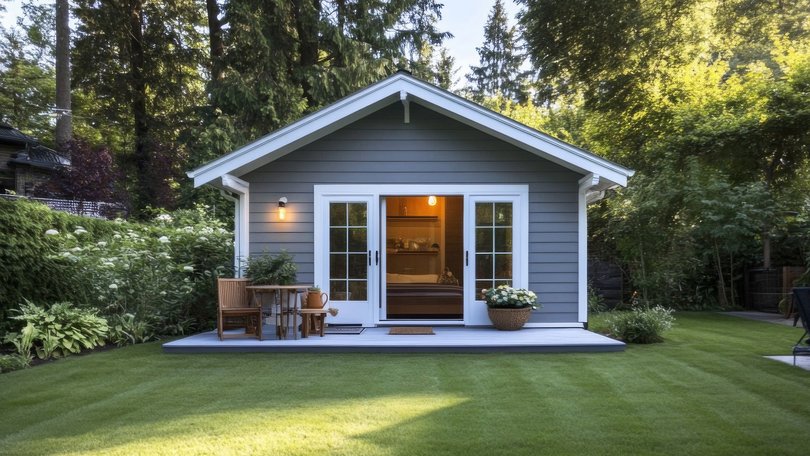NICK BRUINING: ‘Granny flat interest’ deal with Centrelink is the gift that could supersize your age pension

As families start to grapple with Saturday’s changes to the aged-care system, one option may be to take up a “granny flat interest” with a loved one.
What’s not widely known is that it doesn’t require you to build a pokey little box in the backyard.
It could also mean you end up with more in your pocket each fortnight and pay less for aged-care fees as you move through the latter stages of retirement.
Sign up to The Nightly's newsletters.
Get the first look at the digital newspaper, curated daily stories and breaking headlines delivered to your inbox.
By continuing you agree to our Terms and Privacy Policy.The idea of having Mum or Dad move into a purpose-built granny flat might not suit all families. Notwithstanding what can sometimes amount to 24/7 care and attention, at the very least there’s a sense of security, knowing that someone’s keeping an eye on you.
While there’s a thriving business in building mini, self-contained homes in the backyard, many aren’t aware that a granny flat arrangement can be set up in an existing home, with little or no modification.
In other words, you can have all the benefits of a granny flat, just taking up a spare bedroom.
Apart from the care aspect, there can be considerable Centrelink benefits as well. It effectively allows seniors to transfer assets beyond the normal gifting limits to improve their welfare position.
Normally, the gifting limits apply when cash or assets are transferred to someone else. There’s a $10,000 annual limit and a $30,000 limit over a rolling five-year period.
While you can certainly give away more, the amount beyond the limits stays in Centrelink’s systems for five years from the date of the gift. The excess amount is deemed for income-test purposes and also counted as an assessable asset.
Gifting rules do not apply when you establish a “granny flat interest” and, depending on the arrangement, all or a large part of the money or assets you give your kids is simply removed from your assessable assets.
The term loosely describes an arrangement where you acquire the right to live in a property for the rest of your life.
It can be a separate building, an addition to an existing home or even just the right to reside in a home. You can even buy a new home for your kids or transfer the title of your existing home to your kids — provided you have the right to reside there.
The arrangement must be documented and clearly establish that non-revocable right of residence for the rest of your life. There can be exit provisions, but that requires some form of financial compensation to be paid to you if that happens.
That becomes important if the arrangement breaks down through relationship issues or if the kids decide to move to another home and there’s no room for you. You’ll need money to make other arrangements.
The amount paid for this arrangement depends on what then happens. If the money is fully used to build, acquire or modify the home, there are no limits.
If it’s simply to buy your “granny flat interest”, then a special “reasonableness test” applies. This is a figure that establishes an upper amount that is considered “reasonable” to buy your life-time accommodation rights. The reasonable value is calculated by multiplying the current annual amount of a couple’s full age pension by a special factor linked to your age, called the conversion factor.
For example, a 65-year-old has a conversion factor of 20.64 and the current combined annual pension for a couple is $46,202. The reasonable value for this person is $953,609.
A 75-year-old, however, has a conversion factor of 12.78, giving a reasonable value of $590,461.
There’s one special condition for the first five years. If the arrangement was put in place with the knowledge that the person might move into residential care, the gifting rules can still apply. That might be when you have the early signs of dementia and hand over the money.
The home care changes that commenced on Saturday include asset values in calculating the monthly fees payable by you. Only those who were in the system prior to September 12, 2024, qualify for special grandfathering provisions that ensure they won’t pay more under the new rules.
Significantly, strategies which once only applied to improving your Centrelink position will now help to reduce the amount you are required to contribute if you are a part-pensioner.
Establishing a “granny flat interest” arrangement could see you qualify for an aged pension for the first time or boost your existing payment and reduce your compulsory contribution towards your new Support at Home package.
Nick Bruining is an independent financial adviser and a member of the Certified Independent Financial Advisers Association.

